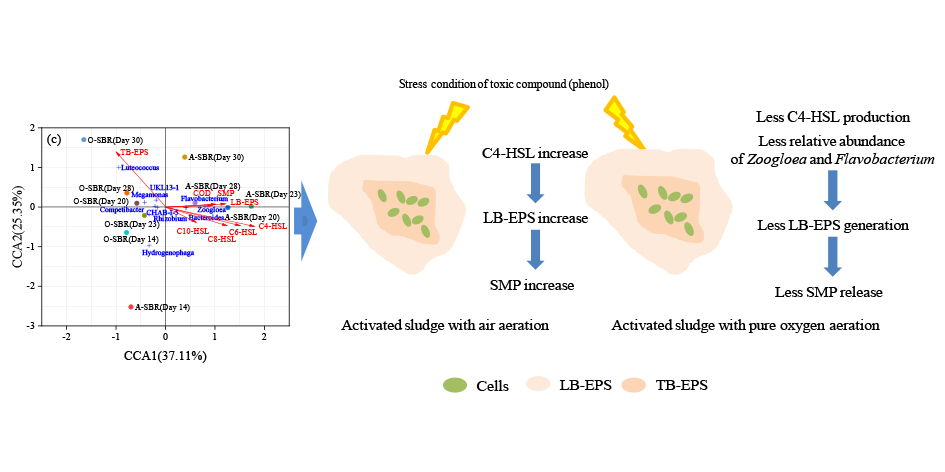
This study aimed to explore the effect of pure oxygen aeration on the generation of soluble microbial products (SMP) when activated sludge was under toxic stress condition of phenol. Two parallel sequencing batch reactors, one with air and the other with pure oxygen aeration, were used to investigate the relationships among effluent chemical oxygen demand (COD), N-acyl-homoserine lactones (AHLs), microbial community, extracellular polymeric substances (EPS), and SMP. The results showed that pure oxygen aeration caused rapid recovery of the activated sludge and low effluent COD concentration in steady condition when the two reactors were fed with phenol. In contrast, these results were not observed with sodium acetate as substrate. A strong correlation was found among C4-HSL, loosely bound EPS (LB-EPS), and SMP. The genera Zoogloea, Bacteroides, and Flavobacterium were also related to effluent COD, SMP, and LB-EPS production under toxic stress condition of phenol. Pure oxygen aeration reduced AHL production and decreased the relative abundance of specific genera (Zoogloea and Flavobacterium). These changes caused the reduction of SMP generation in the pure oxygen-aerated activated sludge systems. These results provide insights into the effect of pure oxygen aeration on SMP generation of activated sludge with toxic substance existence.
Total file downloads: 6